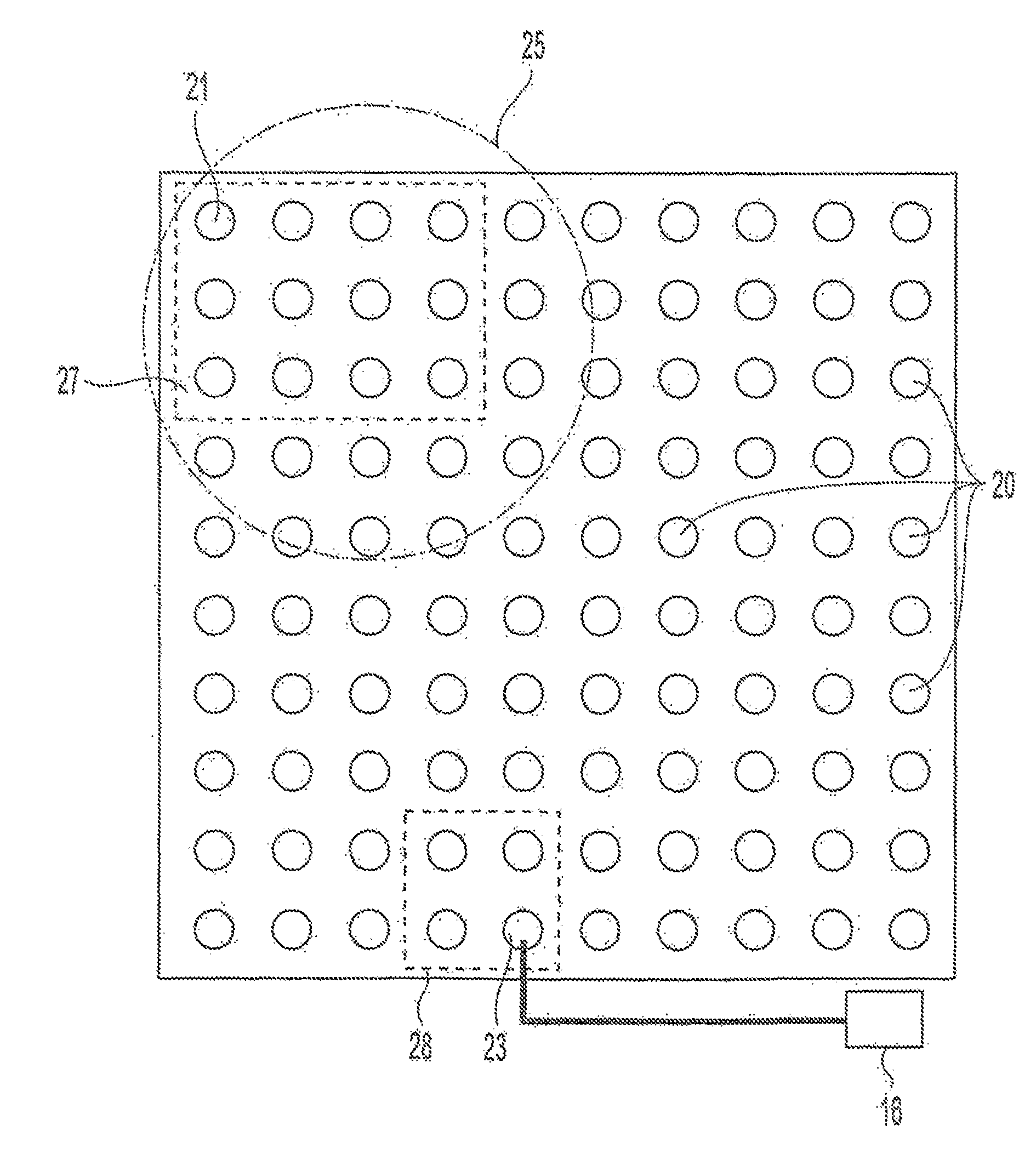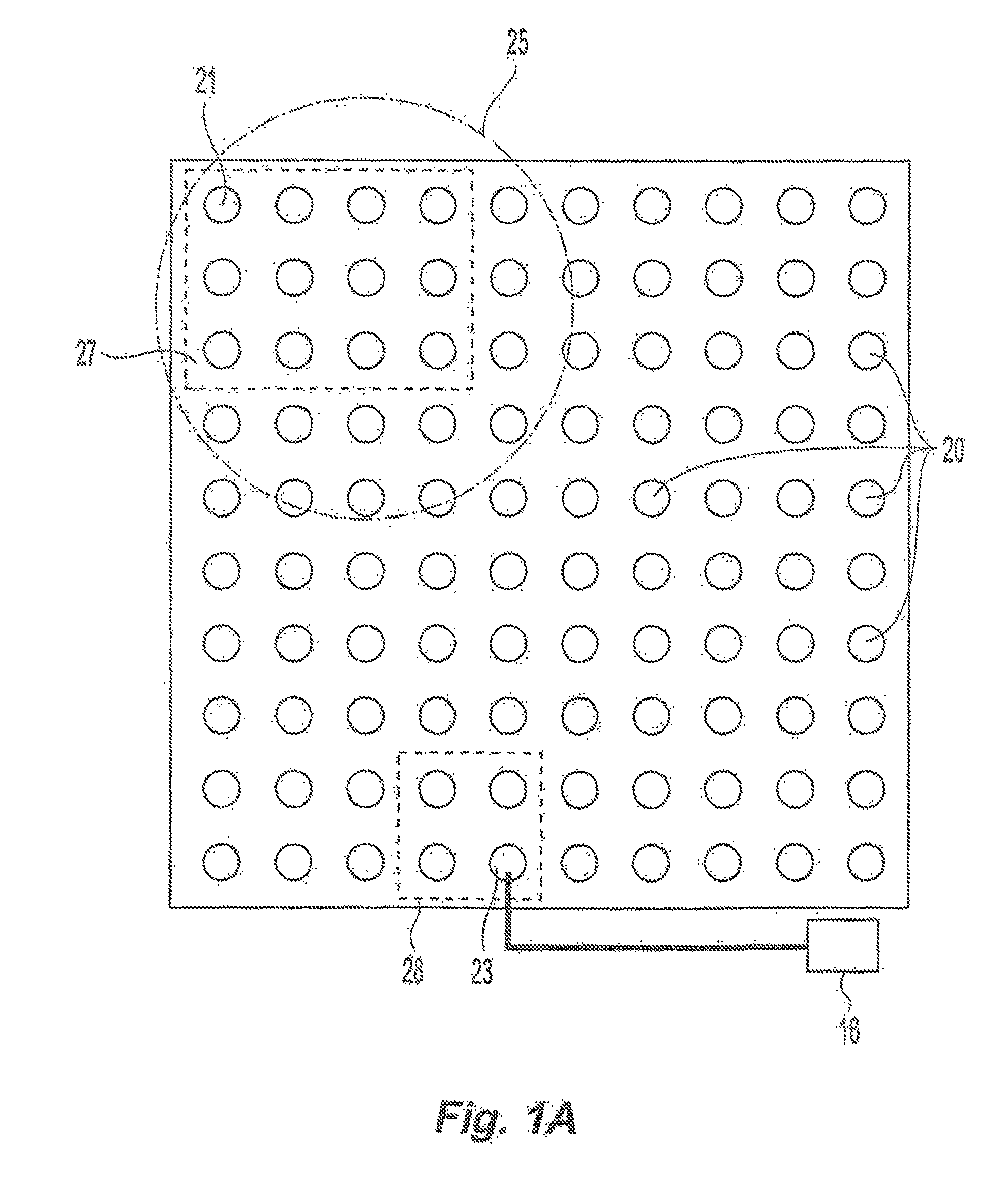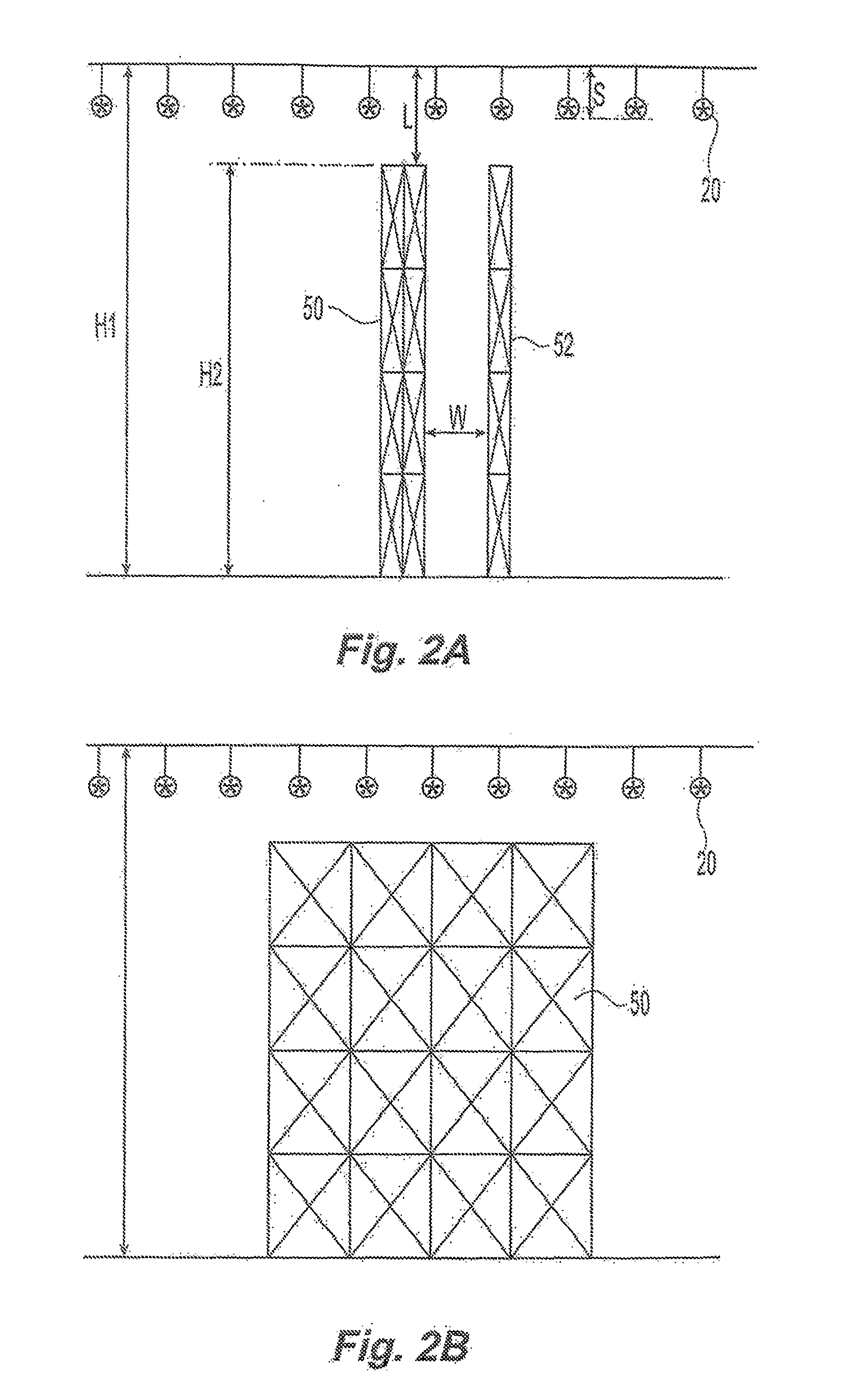Ceiling-only dry sprinkler systems and methods for addressing a storage occupancy fire
a dry sprinkler and floor only technology, applied in watering devices, medical science, horticulture, etc., can solve the problems of difficult maintenance, inferior dry sprinkler systems to wet systems, and large volume of air that must escape or be expelled, so as to reduce the heat release from the fire event quickly, eliminate or minimize the economic disadvantages and design penalties
- Summary
- Abstract
- Description
- Claims
- Application Information
AI Technical Summary
Benefits of technology
Problems solved by technology
Method used
Image
Examples
example 1
[0134]A sprinkler system 10 for the protection of Class II storage commodity was constructed as a test plant and modeled to generate the predictive heat release and sprinkler activation profiles. The test plant room measured 120 ft.×120 ft. and 54 ft. high. The test plant included a 100 ft.×100 ft. adjustable height ceiling which permitted the ceiling height of the plant to be variably set. The system parameters included Class II commodity in multiple-row rack arrangement stored to a height of about thirty-four (34 ft.) located in a storage area having a ceiling height of about forty feet (40 ft.). The dry sprinkler system 10 included one hundred 16.8 K-factor upright specific application storage sprinklers 20 having a nominal RTI of 190 (ft-sec.)1 / 2 and a thermal rating of 286° F. on ten foot by ten foot spacing. The sprinkler system 10 was located about seven inches (7 in.) beneath the ceiling and supplied with a looped piping system. The sprinkler system 10 was configured to prov...
example 2
[0141]In a second fire test, a sprinkler system 10 for the protection of Class III storage commodity was modeled and tested in the test plant room. The system parameters included Class III commodity in a double-row rack arrangement stored to a height of about thirty feet (30 ft.) located in a storage area having a ceiling height of about thirty-five feet (35 ft.). The dry sprinkler system 10 included one hundred 16.8 K-factor upright specific application storage sprinklers having a nominal RTI of 190 (ft-sec.)1 / 2 and a thermal rating of 286° F. on ten foot by ten foot (10 ft.×10 ft.) spacing. The sprinkler system was located about seven inches (7 in.) beneath the ceiling.
[0142]The system 10 was modeled as normalized to develop a predictive heat release and sprinkler activation profile as seen in FIG. 6. From the predictive profiles, eighty percept Of the maximum sprinkler operational area 27, totaling about sixteen (16) sprinklers was predicted to occur following a maximum fluid del...
example 3
[0148]In a third fire test, a sprinkler system 10 for the protection of Class III storage commodity was modeled and tested in the test plant room. The system parameters included Class III commodity in a double-row rack arrangement stored to a height of about forty feet (40 ft.) located in a storage area having a ceiling height of about forty-three feet (43 ft.). The dry sprinkler system 10 included one hundred 16.8 K-factor upright specific application storage sprinklers having a nominal RTI of 190 (ft-sec.)1 / 2 and a thermal rating of 286° F. on ten foot by ten foot (10 ft.×10 ft.) spacing. The sprinkler system was located about seven inches (7 in.) beneath the ceiling.
[0149]The test plant was modeled as normalized to develop a predictive heat release and sprinkler activation profile as seen in FIG. 7. From the predictive profiles, eighty percent of the specified maximum sprinkler operational area 27, totaling of about sixteen (16) sprinklers, was predicted to occur following a maxi...
PUM
 Login to View More
Login to View More Abstract
Description
Claims
Application Information
 Login to View More
Login to View More - R&D
- Intellectual Property
- Life Sciences
- Materials
- Tech Scout
- Unparalleled Data Quality
- Higher Quality Content
- 60% Fewer Hallucinations
Browse by: Latest US Patents, China's latest patents, Technical Efficacy Thesaurus, Application Domain, Technology Topic, Popular Technical Reports.
© 2025 PatSnap. All rights reserved.Legal|Privacy policy|Modern Slavery Act Transparency Statement|Sitemap|About US| Contact US: help@patsnap.com



